Action Target™ designs and creates industry-leading, state-of-the-art gun ranges and target systems that provide unrivaled firearms training and proficiency. Whether you use your range for training, qualification, decision-making, or entertainment, your Action Target range provides an engaging, safe, and environmentally responsible shooting environment. A crucial component of any gun range is the target system employed on the range. Action Target offers a wide variety of target systems that allow you to optimize your range to your shooting discipline, simulate real shooting environments, and maximize the effectiveness of your range. These target systems seamlessly integrate into indoor gun ranges, outdoor gun ranges and modular small arms ranges.
Target Systems
- Genesis™ and Pilot™ target retrievers offer dynamic target presentations that turn, tease, and spin targets to provide an unpredictable experience for the shooter. These systems are ideal for charging drills and custom scenarios that require life-like behavior and variable target distances. Common scenarios include law enforcement qualifications, firearm proficiency training, and commercial games.
- SRET™ is Action Target’s longest-standing target retriever. The base model SRET is the most economical offering from Action Target and includes a toggle switch that sends a target out and back. An optional keypad interface provides a digital readout of target location and allow you to expand device capabilities to meet the needs of your range.
- Dual Running Man Pro™ target systems move targets laterally along a track at variable speeds (walk, jog, run) to provide weapons training with moving targets. The DRM Pro solution is popular with law enforcement and military installations.
- Turning Targets can rotate target positions by 90°, 180°, and 360°. Turning targets present shoot or no-shoot scenarios at or before cognitive reaction timing—ideal for qualification and decision-making training with law enforcement and military personnel. Indoor (ceiling-mounted) and outdoor (ground-mounted) installations are available with pneumatic and electric controls.
- Autotargets™ are reactive targets that use hit-sensing technology to detect target strikes. With each strike, the Autotarget sends a digital signal to an app that tracks draw speed, split times, and strike location. Autotargets are available with zone-based targets that divide strikes into multiple scoring zones (center mass and outer-body) and E-type targets that offer single zone strike detection. Autotargets are modular and wireless, deploy anywhere, and sync together to form a mesh network.
- Pneumatic Bobbers are reactive steel targets that challenge a shooter’s speed, accuracy, and judgement. Targets pop up from and retreat behind total cover, forcing shooters to concentrate on shot placement. Separate shoot no-shoot target plates require shooters to make split-second decisions on which target they want to shoot. Innovative training software controls presentation times and intervals.
- Line of Fire™ shooting ranges incorporate multiple target systems in a single line of fire. Target systems include the Dual Running Man Pro, turning targets, swing-up targets, and pneumatic bobbers. This turnkey range solution is unparalleled when creating dynamic training environments. Line of Fire ranges are self-contained and frame-mounted, so you can expand your range with ease—all you need is flat ground and a suitable backstop or bullet trap. Line of Fire ranges do not require railroad ties, concrete, or other protective walls in front of the targets because they include an angled AR500 steel knee wall.
Range Types
- Indoor Ranges are completely enclosed spaces that use safety baffles, bullet traps, shooting stalls, sound abatement, range lighting, air filtration, and ventilation to provide the safest possible shooting environment. Indoor ranges feature ceiling-mounted target retrievers, turning targets, floor-mounted Autotargets, and shooting stalls.
- Outdoor Ranges typically have minimal infrastructure requirements, but support the installation of safety baffles, shooting stalls, bullet traps, and other protection solutions that reduce the risk of ricochet or injury—especially when in proximity of neighboring communities. Outdoor ranges feature ground-mounted turners, bobbers, DRM Pro retrievers, Line of Fire products, and Autotargets.
- Modular Ranges are the ultimate in portable, self-contained, modular small arms ranges. Action Target and Cover Six partnered to create the Arcas™ DLX, MBL, and EXT, a series of modular gun range solutions you can place anywhere, with minimal site infrastructure required. These self-contained ranges feature ceiling-mounted target retrievers, DRM Pro target systems, turning targets, and ground-mounted Autotargets.
- Arcas DLX – Is the new standard for modular small arms ranges, scaling to meet specific project requirements of up to 14 lanes and a 100M target distance. This deluxe configuration features an open-bay concept that does not require vertical supports mid-range and uses fewer modules than its competitors.
- Arcas EXT – Deploys quickly and with minimal infrastructure, providing up to 3 lanes and a 100M target distance. Instead of the industry’s standard of reusing containers, the Arcas EXT utilizes purpose-built modules that combine seamlessly to create an unmatched finished product.
- Arcas MBL – A mobile, chassis-mounted module built for the road. Fully portable, this range goes where it’s needed and includes all options and features found in any typical fixed-location small arms range.
Reach out to the Action Target Range Design Consultants to discuss your next range project.
##
Media Contact:
Jesse Nelson
JNelson@ActionTarget.com
Action Target
3411 Mountain Vista Parkway
Provo, Utah 84606







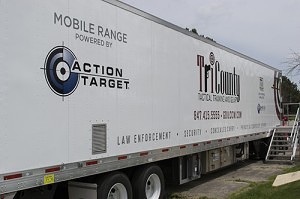
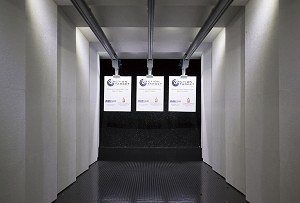
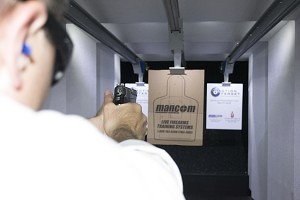
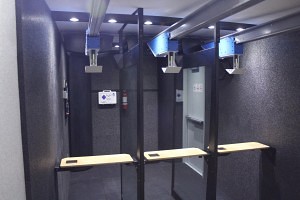
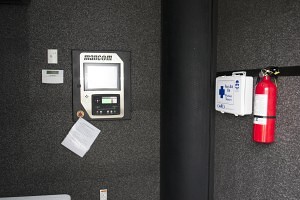
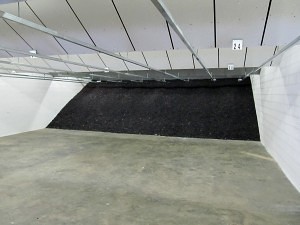 As we discussed in the first part of this article,
As we discussed in the first part of this article, 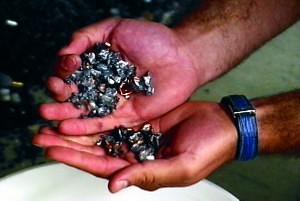
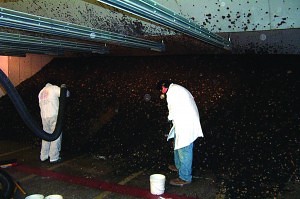 The first device is a large collection bin or “hopper” that spans the top of the trap. In certain cases, the chopped rubber has been found to migrate and flow toward the bottom of the trap leaving undesirably thin coverage near the top. When this happens, the extra rubber that accumulates at the bottom of the trap should be periodically collected and returned to the hopper. This process can be very labor intensive, and you should employ the same safety equipment and procedures used when cleaning the trap.
The first device is a large collection bin or “hopper” that spans the top of the trap. In certain cases, the chopped rubber has been found to migrate and flow toward the bottom of the trap leaving undesirably thin coverage near the top. When this happens, the extra rubber that accumulates at the bottom of the trap should be periodically collected and returned to the hopper. This process can be very labor intensive, and you should employ the same safety equipment and procedures used when cleaning the trap.
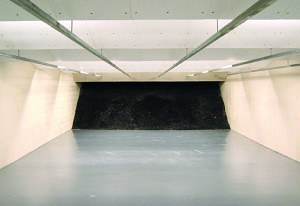 Because the rubber is a softer collection medium, ricochet and lead dust can be significantly reduced in some applications. Cross-range firing is safer, as is firing at extremely close distances. Such benefits make this trap an excellent choice for certain indoor ranges and other low-volume ranges where lead dust is a concern.
Because the rubber is a softer collection medium, ricochet and lead dust can be significantly reduced in some applications. Cross-range firing is safer, as is firing at extremely close distances. Such benefits make this trap an excellent choice for certain indoor ranges and other low-volume ranges where lead dust is a concern.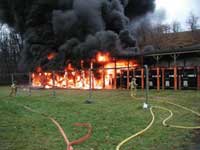
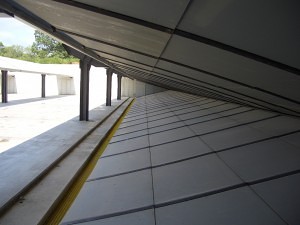
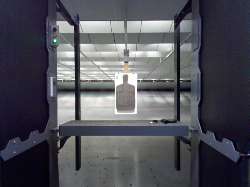 different portable systems to meet your budget and needs, running targets can easily be incorporated into your training program. The Track Runner provides the tools for a wide variety of situation with single or double track configurations, cardboard and steel target compatibility, variable speed and electric braking, and remote hand held control of movement.
different portable systems to meet your budget and needs, running targets can easily be incorporated into your training program. The Track Runner provides the tools for a wide variety of situation with single or double track configurations, cardboard and steel target compatibility, variable speed and electric braking, and remote hand held control of movement.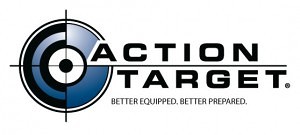 There are hundreds of things to take into consideration when building a shooting range, but your top priority should always be safety. Before anything else, make sure your range is going to be safe for your customers, your employees, and the environment. If you are considering building a range, talk to the
There are hundreds of things to take into consideration when building a shooting range, but your top priority should always be safety. Before anything else, make sure your range is going to be safe for your customers, your employees, and the environment. If you are considering building a range, talk to the  The Action Target Total Containment Trap can be a great solution to this problem if your daily foot traffic is able to balance the expense of installing and maintaining it. With two different types of lead removal systems, the TCT allows for varying levels of use and greatly diminishes the time you have to spend maintaining your shooting range. Essentially, the TCT is a giant armor steel
The Action Target Total Containment Trap can be a great solution to this problem if your daily foot traffic is able to balance the expense of installing and maintaining it. With two different types of lead removal systems, the TCT allows for varying levels of use and greatly diminishes the time you have to spend maintaining your shooting range. Essentially, the TCT is a giant armor steel  Action Target’s patented wall and ceiling baffles are designed to
Action Target’s patented wall and ceiling baffles are designed to 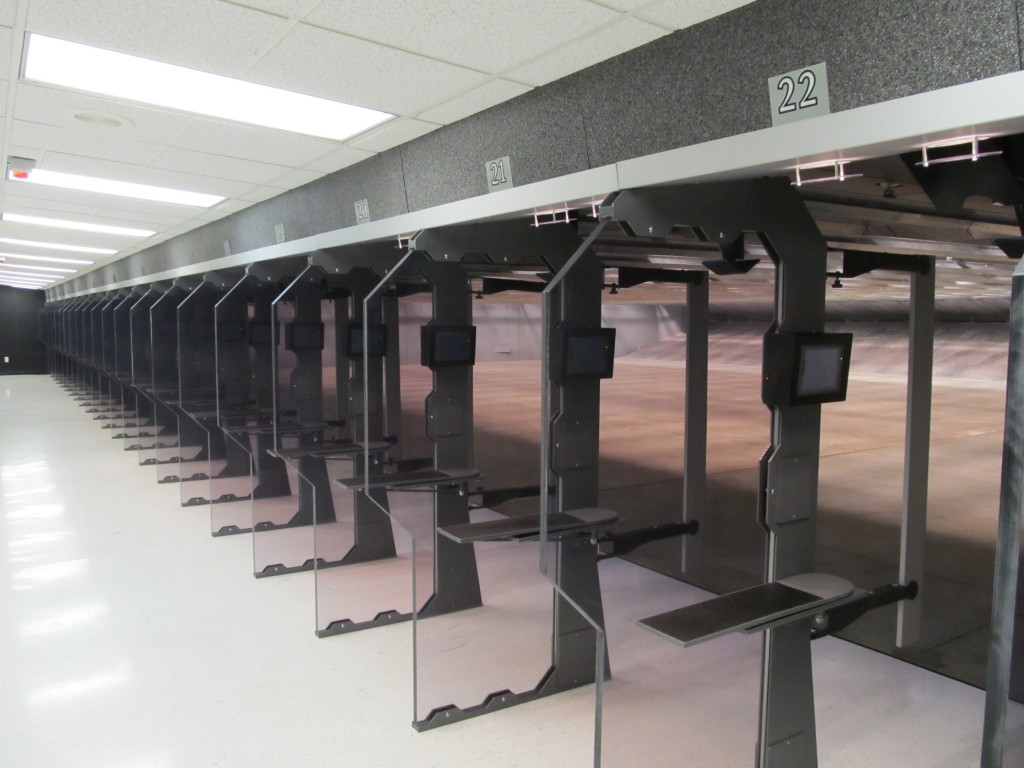
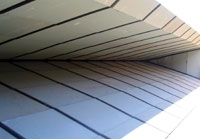 The equipment you install in your shooting range can also have a significant effect on your future success. If you anticipate a large number of shooters on your range every day, you may want to reconsider the
The equipment you install in your shooting range can also have a significant effect on your future success. If you anticipate a large number of shooters on your range every day, you may want to reconsider the 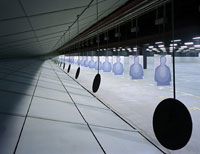 The Total Containment Trap is the dominant industry standard for modern, heavy-duty, steel bullet traps. It is the superior choice for ranges where safety, reliability, simple maintenance, and ease of use are top priorities. The TCT can be used both indoors and outdoors in all types of
The Total Containment Trap is the dominant industry standard for modern, heavy-duty, steel bullet traps. It is the superior choice for ranges where safety, reliability, simple maintenance, and ease of use are top priorities. The TCT can be used both indoors and outdoors in all types of